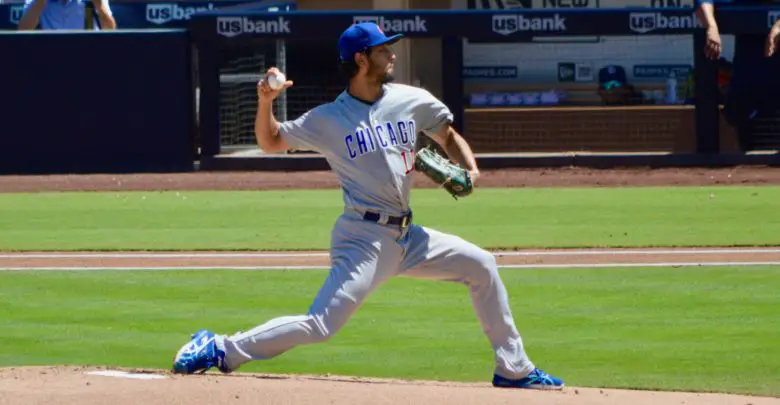
2019 Chicago Cubs Season Review: Starting Rotation Strong Despite Question Marks
This past season was not a good one for the Cubs, whose 84-78 record and disappointing third-place finish left a lot to be desired. So where can they improve things heading into 2020? The best way to determine that is to review the 2019 campaign to see what went wrong, what went right, and what areas can conceivably be upgraded even if they remain somewhat frugal this winter.
Perhaps the best starting point for any comprehensive review is the starting rotation, especially given the importance of pitching in achieving ultimate success. When Chicago won the World Series in 2016, their starting staff was the key factor. Jon Lester and Kyle Hendricks were Cy Young finalists that season and Jake Arrieta was the reigning winner.
Two of those pitchers remain integral pieces heading into next season, but the Cubs are going to need to shuffle a few things around to get the most out of a rotation that isn’t exactly on the upswing.
What worked
The rust from Yu Darvish‘s injury-plagued 2018 was evident early with a 5.01 first-half ERA and a whopping 49 walks in 97 innings. The command clicked out of the break, however, and Darvish posted a 2.76 ERA with just seven walks over 81.2 innings pitched in the second half. His 229 strikeouts were good for seventh in the National League, and it’s safe to say a similar effort in 2020 would be huge.
Hendricks signed a four-year contract extension before the season and showed it was the right move. The Professor posted a 3.46 ERA and a 3.9 WAR in 177 innings pitched in 2019. A shoulder injury cost him a handful of starts in June, but he was still the Cubs most effective starter.
The Cubs picked up Cole Hamels‘ $20 million option before the season and the early results were very good. The first half saw the big lefty dazzle with a 2.98 ERA while holding opponents to a .659 OPS. Then he suffered an oblique strain in July that forced him to miss a month, after which he was totally ineffective with a 5.79 ERA and a .903 opponent OPS.
What didn’t work
Lester struggled in 2019 with a 4.46 ERA in 171.1 innings pitched. His 4.26 FIP was actually lower than the 4.39 he posted in 2018, but his 3.32 ERA last season was much better. The Cubs have certainly reaped plenty of rewards from the Lester deal, but it’s not clear what they can expect from the 36-year-old in 2020.
José Quintana had his worst season with the Cubs, producing a 4.68 ERA and battling issues with consistency. As with Lester, Quintana had a better FIP (3.80) this season than last (4.43), he just couldn’t maintain a high level of play. After a dominant stretch of games early in the year, he had a horrible slump to end the season.
Biggest needs
Darvish and Hendricks are set as the top two starters entering 2020 and Lester is locked in for a spot in the rotation for one more season. The Cubs could use another solid back-end starter for depth, but health will be another big factor. With age working against them, they can ill afford to miss their top guys for any significant period of time.
Question marks
Quintana has an $11.5 million team option entering 2020 with a $1 million buyout. The Cubs are expected to pick up the deal, but those late-season issues at least make it worth a second look. Hamels is a free agent and there is some debate about bringing him back on a cheap deal, should be be open to one. Tyler Chatwood was much better in 2019 with a 3.76 ERA and a 2.00 K/BB ration in 76 relief innings. Would Theo Epstein consider Chatwood returning to the starting rotation? Or could the front office acquire a new piece for the rotation from outside the organization?
Conclusion
The Cubs’ starting rotation was significantly better than the mess of a bullpen that never really solidified. Many questions still exist about an aging pitching staff, but the top of the rotation is strong and a couple tweaks may produce a very good unit. Keep an eye on the back end of the rotation, which is the most likely area of improvement for a front office with limited buying power.
Will the Cubs be content to stand pad and add a little around the fringes, or make some big moves on the trade market to produce more significant upgrades? We’ll find out before long.

